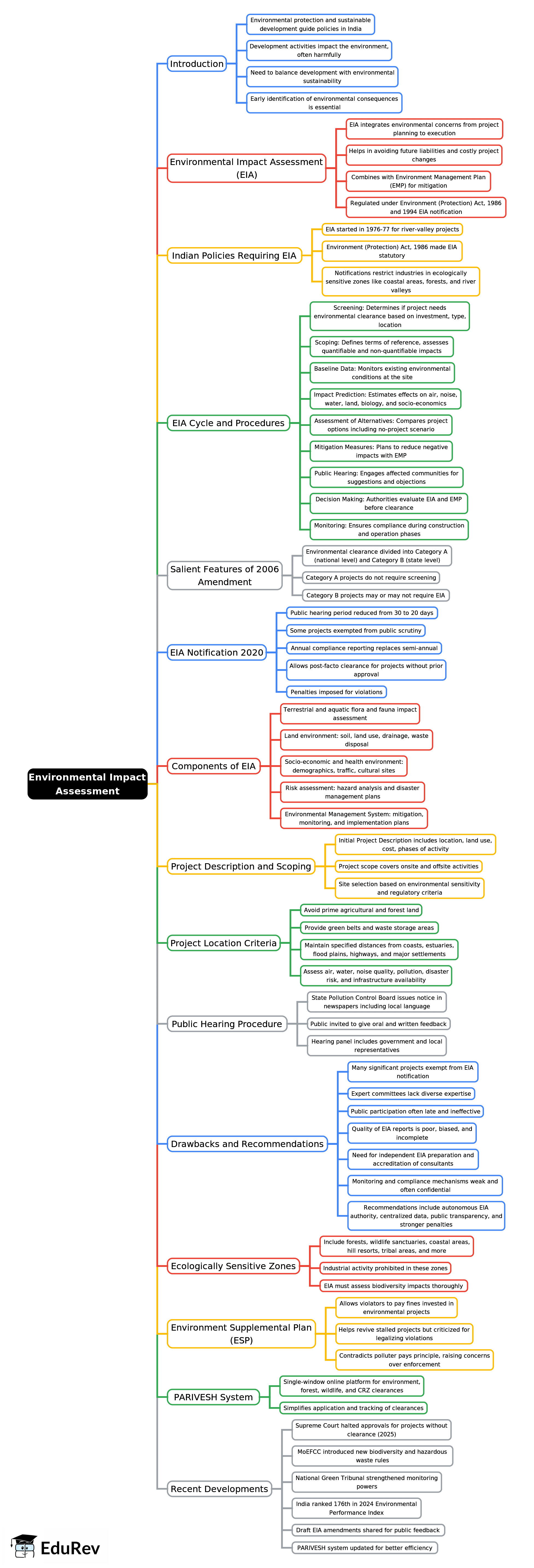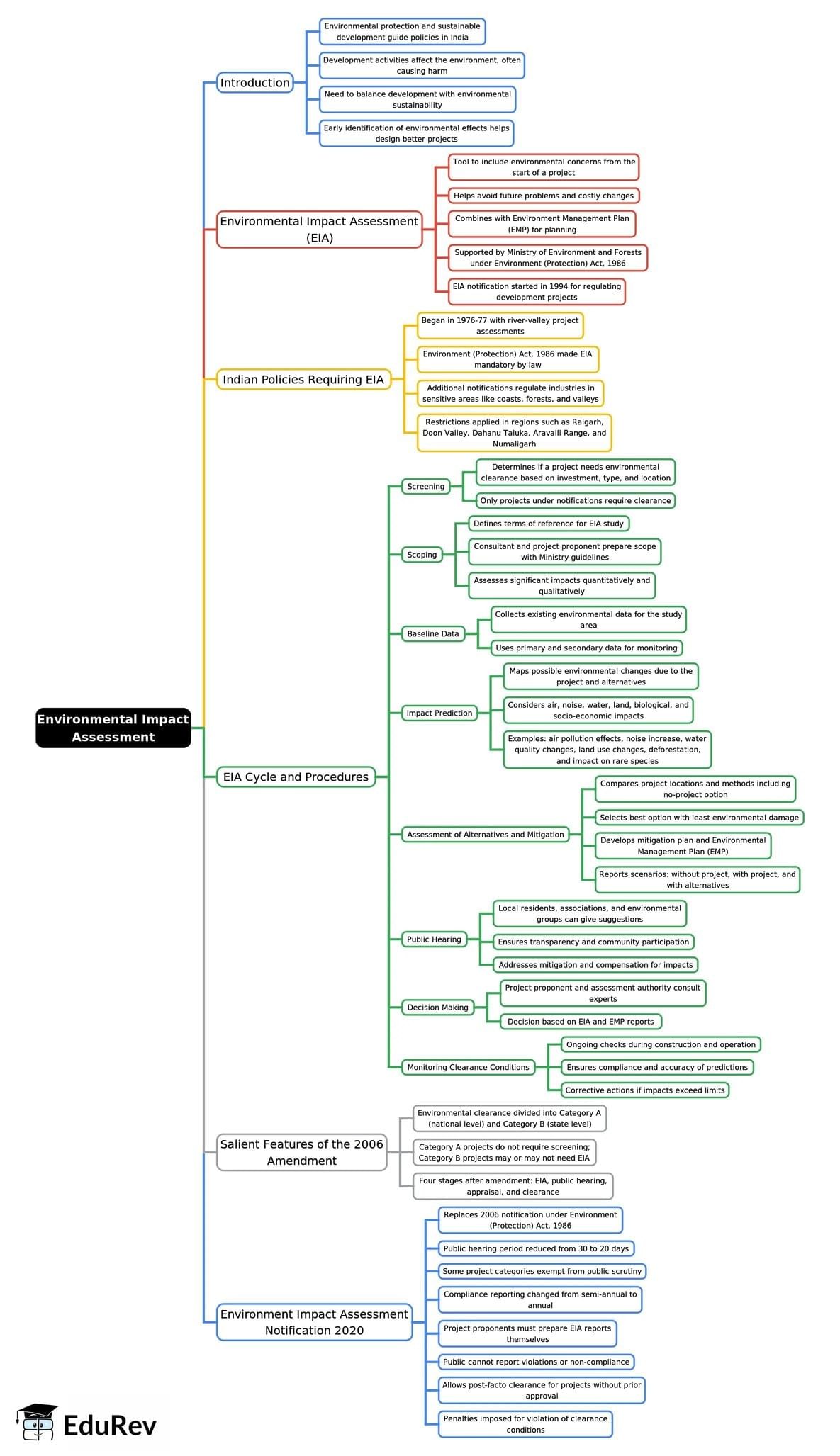UPSC Exam > UPSC Notes > Environment for UPSC CSE > Mind Map: Environmental Impact Assessment
Mind Map: Environmental Impact Assessment | Environment for UPSC CSE PDF Download
Environmental Impact Assessment - 1

Environmental Impact Assessment - 2

Environmental Impact Assessment - 3

The document Mind Map: Environmental Impact Assessment | Environment for UPSC CSE is a part of the UPSC Course Environment for UPSC CSE.
All you need of UPSC at this link: UPSC
|
95 videos|230 docs|52 tests
|
FAQs on Mind Map: Environmental Impact Assessment - Environment for UPSC CSE
| 1. What is the purpose of Environmental Impact Assessment (EIA) in India? |  |
Ans. The purpose of Environmental Impact Assessment (EIA) in India is to evaluate the potential environmental effects of a proposed project before it is approved. EIA aims to ensure that decision-makers consider environmental impacts, facilitating sustainable development. It helps in identifying, predicting, and assessing the potential adverse effects of projects on the environment and recommends measures to mitigate these impacts.
| 2. What are the key steps involved in the EIA process? |  |
Ans. The key steps involved in the EIA process include screening, scoping, impact assessment, mitigation measures, public consultation, decision-making, and monitoring. Screening determines if a project requires EIA, scoping identifies the significant impacts to be assessed, and the impact assessment evaluates these impacts. Public consultation engages stakeholders, and the final decision is made based on the assessment report, followed by monitoring to ensure compliance with the recommended measures.
| 3. What are the legal frameworks governing EIA in India? |  |
Ans. The legal frameworks governing EIA in India include the Environment (Protection) Act, 1986, and the EIA Notification, which was first issued in 1994 and has undergone several amendments. These laws outline the procedures for conducting EIA, establishing the criteria for categorizing projects, and specifying the roles and responsibilities of various stakeholders involved in the EIA process.
| 4. How does public participation influence the EIA process? |  |
Ans. Public participation is crucial in the EIA process as it allows stakeholders, including local communities and NGOs, to voice their concerns and provide input on potential environmental impacts. This engagement helps ensure that the EIA considers diverse perspectives and local knowledge, ultimately leading to more informed decision-making and enhancing the transparency and accountability of the process.
| 5. What are some common challenges faced in the EIA process? |  |
Ans. Common challenges in the EIA process include inadequate baseline data, lack of skilled professionals, insufficient public participation, and political interference. Additionally, there may be challenges related to the enforcement of EIA recommendations and monitoring compliance, which can undermine the effectiveness of the assessment and its ability to protect the environment.
Related Searches
















